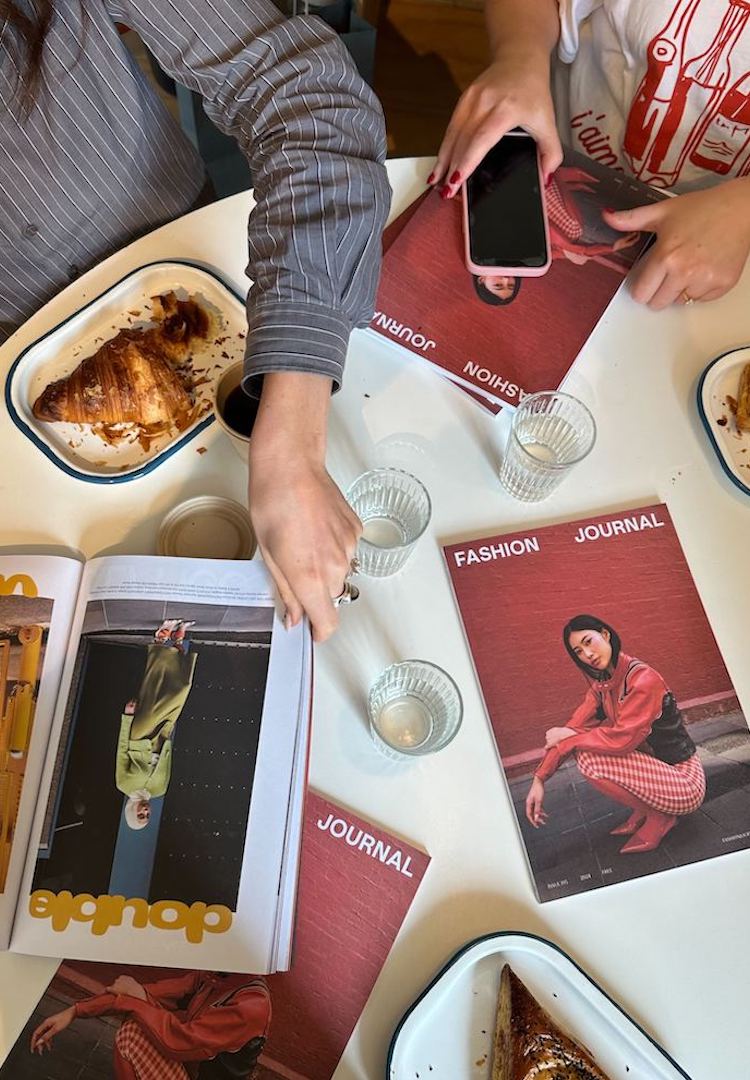How to pitch to an editor and actually get your work published
IMAGE VIA CHANEL
WORDS BY CAIT EMMA BURKE
Take note.
Over the years, I’ve seen many a pitch. Some have hit the nail on the head, while others have been immediately deleted or lingered in my (overflowing) nightmare of an inbox and promptly been forgotten about.
It’s true what they say – editors really do receive an astronomical amount of emails. This means we can quickly distinguish a great pitch from a good pitch.
Looking for more careers related content? Check out our Life vertical.
So for the common good of creatives and editors everywhere, I’ve put together a list of pitching tips that, 60 per cent of the time, works every time. Here’s to getting published.
1. The way you write your email matters
For whatever reason, this is one that a lot of people don’t pay much attention to. Despite the world of editorial being shrouded in ambiguity, there is no hidden ‘art’ to writing pitches that is accessible only through membership and secret passwords. It’s a skill, and like any skill, the more you do it the better you get.
Start by writing PITCH: Insert Title of Pitch Here in the subject line. (Please don’t actually write Insert Title of Pitch Here.) This means I can quickly drag your email to the folder I assign pitches to, and when it comes to commissioning new content (something we do practically every week), I’ll dive into my pitches folder to review what I’ve been sent.
Now, onto the body of the email. Keep it simple: introduce yourself, tell us you’d like to contribute, outline your ideas and direct us to examples of your work. If you don’t have any published work yet, attaching an example of your personal writing is a great idea.
2. Don’t make us do the legwork
Come armed with ideas. None of this “Here are my skills, is there anything you’d like me to write for you?” business. We already know people with your skills, and because we’ve worked with them before, we’re more likely to work with them again. The same goes for every other publication out there.
Instead, give us something specific and what you’ll do to make it happen. Make yourself indispensable to the idea, so we have no choice but to go with you.
3. Attach relevant examples of your work
Rather than tell us why you’re good, show us. If we can easily envision your words/images/concepts on our site, we’re much more likely to give your ideas the seal of approval.
If you don’t have relevant work to show us, make it. If you’re really genuine about writing for us, it’s worth spending a couple of hours producing something that shows us your skills.
4. Tell us you love us
At the end of the day, we’re just a publication, standing in front of a potential writer, wanting you to tell us you love us. But in all seriousness, if you can convince us that you genuinely love our content, we’ll want to work with you more.
We’ve found those who read Fashion Journal more quickly adopt our tone, inject a little humour and avoid clichés (all things we love). Those who don’t, well, they make all the mistakes. Plus, we’d rather work with people who know and love us.
5. Don’t make your pitches too timely
Often when it comes to new contributors, there’s a bit of back and forth with editors to get the tone/language/format/vibe exactly right. This can take a little bit of time. So if you pitch us an idea today that won’t be relevant tomorrow, chances are we’re not giving it the green light.
6. Keep pitches concise
Editors are time-poor, so get to the point as quickly as possible – I suggest no more than 150 words. It’s also unlikely you will get a pitch approved if you send through just one idea.
Just like every publication out there, we decline much more content than we commission. I’d suggest increasing your chances by putting forth three to four ideas per email. As for the format, I find the below works well.
Headline
Snappy tagline.
Here are all the details of the piece I’ll write, because of my reason for pitching it. I propose this particular format, covering the below key points (you can also include any people of note/experts you wish to interview here):
- Point A
- Point B
- Point C
Benefits to you: Here is how you’ll benefit if you run this piece.
7. Think visually
When it comes to submitting to publications, most articles will require some form of imagery. We do a lot of this legwork ourselves in order to keep our visuals consistent, but if you have imagery you think could work well with your piece, don’t hesitate to send it through (particularly if it’s imagery of you and is connected to the article at hand, e.g. a photo of your beauty cabinet for an article about serums).
Many outlets nowadays place as much emphasis on visual language as written, so make sure your suggestion fits with the publication’s aesthetic, as well as formatting restrictions, and ensure you have been granted the right to use it. All publications require a minimum size for their images, and many are restricted by image orientation (all portrait or all landscape).
8. Know the style guide
Every publication has one and you should know the basics. Do as much reading as you can and find out what words should be italicised, how to format dates, how we like to hyperlink, how to capitalise titles, any information we include at the bottom of an article, etc.
This is something that will immediately set you apart. We live and die by the style guide, and if you can make our jobs a little bit easier by adopting these conventions in your writing, then you’re already part of the way there.
9. Use the tone
Every publication has its own unique tone of voice. You wouldn’t write a Vogue article the same way you’d write for the Financial Review. Make sure you have an understanding of the publication’s tone and reflect this in your pitches.
10. Say my name
Nine times out of 10, our names are in our emails. And if they’re not, it pays to do your research. LinkedIn is an obvious start, or try the publication’s contact page. Personalisation is key!
11. Think end game
Ultimately, all publications want to maximise readership to get those advertising dollars. Know how your pitch will meet this end game. Will it have a high click-through rate? Extend the time spent on page? Maximise SEO? Be highly shared? Receive lots of Facebook comments? Perform well on Instagram? Have the answers ready and communicate these to the editor.
It also helps to look at a publication’s social media platforms to see what posts have received high engagement. Look for commonalities between these posts. This should (roughly) indicate what content performs well, meaning if you can make your ideas align, you’re on the home stretch.
For more advice on pitching, try this.













